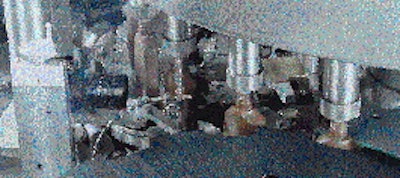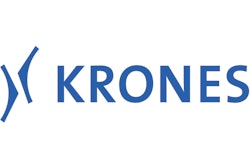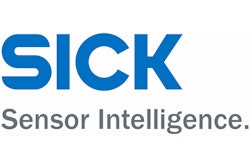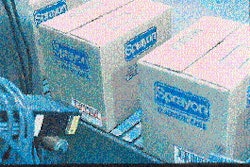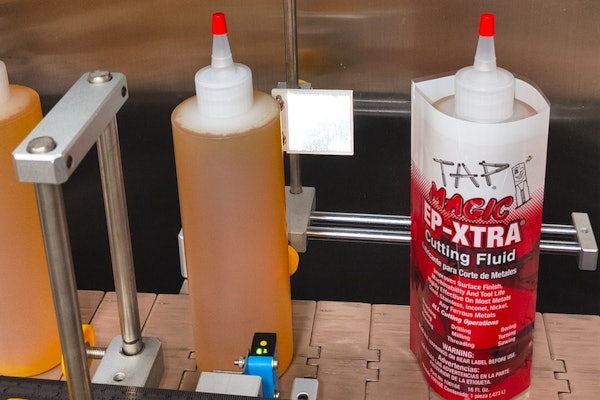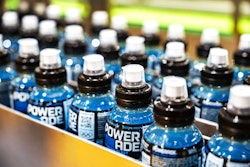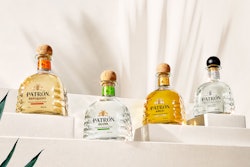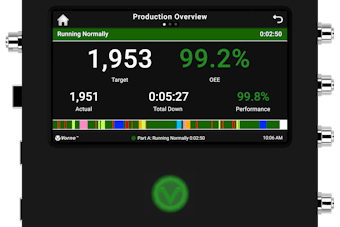For years, Schering-Plough's several plastic bottles of sun protection products were decorated by heat-transfer labeling executed by the blow molders that supply the bottles. Beginning in 1993, the company began to shift to pressure-sensitive clear plastic labels that are applied, for the most part, in-line with filling and capping.
Upfront, the conversion provided two main benefits: improved flexibility in S-P's packaging operation and shorter lead times in changing bottle graphics or copy. With all its different brands, some 50 different combinations of front and back label graphics were used on what is for the most part still a seasonal product.
With heat-transfer labels printed by gravure, substantial lead times are needed to get the label webs produced, and then additional time for blow molders to apply them before bottles can be shipped to S-P plants. "In contrast, pressure-sensitive labels have enabled us to cut in half the lead time for label production, ensuring that our products are on retail store shelves when consumers are ready to buy them," says Andy Blakely, S-P purchasing manager.
Like other companies packaging personal care products, Schering-Plough, Madison, NJ, wanted to achieve the "no label look." Its suncare products include several varieties of Coppertone, Tropical Blend, Shade, Solarcaine and others. At the outset, consumer research indicated that the public perceived no discernible difference between heat-transfer and p-s labeling, reports Blakely.
"With data supporting the probable acceptance by consumers, we turned our attention to other matters such as the type of equipment that would be needed," Blakely says. "Though large investments were made for labeling equipment, the projected payback period was only a few years."
In the end, S-P decided to go to state-of-the-art labeling equipment, he says, purchasing Autocol rotary labelers from Krones (Franklin, WI). If the labelers had to have a few "bells and whistles" to meet S-P needs, the same was true for the labels themselves, supplied by Package Products Specialty Div., Engraph Label Group (Charlotte, NC).
New materials help cut costs
Historically, the cost of converted p-s labels with adhesive and liner pre-applied has been as expensive as a deep, even tan during winter. But thanks to new materials and machine efficiency, S-P's labels are not only delivered quickly, they're also affordable. It took a combination of Package Products' technical skills and Krones' machinery reliability to achieve this.
One of the toughest parts of the project was to get the label material appearance to match that of the bottle. For the high-density polyethylene bottles for Coppertone and other products, Package Products selected a 3.5-mil FasClear® three-layer coextrusion from Fasson Roll Division (Painesville, OH). This combination of polypropylene and polyethylene is a matte film oriented in only one direction.
While that would seem to match the nonglossy finish of HDPE bottles, S-P threw the converter a curve: it requested a fluorescent additive be formulated into the varnish so that additive could be "sensed" down the line to avoid the possibility of an unlabeled bottle being shipped. That request is typical for a pharmaceutical company like S-P where verification of label presence is critical.
Package Products planned to screen-print the main panel labels in up to five colors to apply the heavy ink laydown that enhances the appearance and feel of "no label look" decorating. With screen printing, however, varnish is usually omitted and the matte label finish will "disappear" into the bottle finish. Add the varnish and you lose most of the effect of the matte finish, says Karl Kendrick, technical director of Package Products.
"We had Schering's marketing people come in during press trials as we ran different varnishes with different matte levels to match the varnish to different containers," recalls Kendrick. "So it took us some additional developmental work."
Eliminating curling
Other technical concerns were more common. With heavy screen printing on a film structure, inks will tend to shrink. That creates a "halo" around letters. When the print is near the edge, the shrinkage of inks can cause edge curling. In the case of Coppertone, though, the problem with lifting occurred near the center of the label. "Where we printed the Coppertone name, the ink would shrink and pull the label away from the bottle and you'd get a halo. It looked like there was a little bubble around the type," Kendrick reports.
These problems were due to screen printing with ink laydown ten times heavier than regular flexo. "That's why we worked extensively with our ink suppliers to get inks that would virtually eliminate shrinkage," Kendrick says.
The shrinkage is aggravated by the fact that Fasclear uses a water-based emulsion acrylic adhesive. It's not as aggressive as more costly solvent adhesives, but it offers more clarity than a rubber-based adhesive.
The back labels of 3.5-mil FasClear are printed rotary letterpress in three colors with two hits of white for the UPC code. For S-P's oil-based sunscreens that are filled into clear polyvinyl chloride bottles, Package Products selected MIRAGE 300(TM) label material from Fasson.
Converter service spells flexibility
Package Products also worked with the labeler manufacturer to ensure that the label adhesive would achieve the proper "wet-out" on the bottle so it would become clear and the label film would virtually disappear once applied. "The finished bottles provide the direct printing look that customers have become accustomed to. The material and adhesive combine to leave the impression that there is no label, simply ink printed on the bottle," says Blakely. "The labels passed our stringent standards for quality and appearance."
Blakely credits the "Schering-Plough team" that Package Products established in their plant to support the project. Not only did they provide service, he says, but they had an excellent grasp of the latest technology needed to help S-P make the transition from predecorated bottles to labeling in-house.
The change has dramatically reduced S-P's need to inventory bottles, and the switch from gravure to screen printing slashes the time it takes to get labels. "They can keep a small inventory of labels on hand, and change at a moment's notice," Kendrick says. "Plus this gives them the flexibility to make shorter runs. With a program of this size, we work hard to ensure we can quickly get label material for them. And we try to be flexible enough to get their order on press within a week."
Multifunctional labelers
As it turned out, the selection of the labeling equipment was considerably easier. But only because Schering-Plough's demands were far more sophisticated than just accuracy and consistent placement.
"We needed a labeler that would integrate label application, machine vision, bottle orientation and ink-jet coding-all in one package," says Dennis Hodges, principal engineer at Schering-Plough. "This list led us to Krones, because they've been integrating all these features for some time with their labelers."
Why the need for these features? Just like S-P wanted the fluorescent additive in the varnish to detect label presence, the pharmaceutical company was equally quality conscious about the other elements of the package. In this case, the company was adamant that the dispensing cap face in the same direction as the main product label every time.
That might not be too difficult to achieve, except that the majority of the skincare bottles are symmetrical ovals. The other consideration is that Schering-Plough labels some bottles before capping, others after. It operates three labelers, two on high-speed filling lines. But because of the plant layout, one filling line labels before filling, the other after. The third labeler is off-line for lower-volume products.
Read, mark, sense
Since the plant uses the varnish additive to ensure each bottle has a label, PW asked Hodges why the company needed a vision system. All vision systems are Model CVIM modules from Allen-Bradley (Milwaukee, WI). "We use them for what we call thread detection," he answers. "By examining the threads, the system can tell if the bottle needs turning so that the front label will align with a front facing flip-top disc cap."
The Autocol has a slip plate on the bottle pads that allows the programming to engage a rotating gear if the bottle needs to be turned, or not to engage the gear if the bottle is correctly oriented. On the line where labeling is done before capping, the vision system directly signals the orientation of the bottle.
It's even more complex on the line that labels after capping. Schering-Plough located the vision system upstream, shortly after filling. However, because the line couldn't hold register on that container all the way into the labeler, it needed another way to signal bottle orientation to the labeler.
What Hodges came up with is an ink-jet coder that applies an invisible ultraviolet ink registration mark on those bottles that need to be turned. Once in the labeler, a UV sensor from Sick Optic-Electronic (Eden Prairie, MN) recognizes the UV mark and signals for the turning of only those bottles.
In addition, each labeler uses an ink-jet coder to apply the lot code and/or expiration date to the back label just before application to the bottle.
"We looked at a number of pressure-sensitive labelers on the market," Hodges recalls. "The capability of incorporating a vision system, bottle orientation and label coding all on one platform led us to Krones. They were just about the only manufacturer that could supply the total package.
"We had no experience with Krones equipment before and only limited experience with high-speed pressure-sensitive labeling. We liked the construction of these machines, and the touch-screen operator panel is very user-friendly. We went right to the top-of-the-line equipment, and it hasn't disappointed us."
